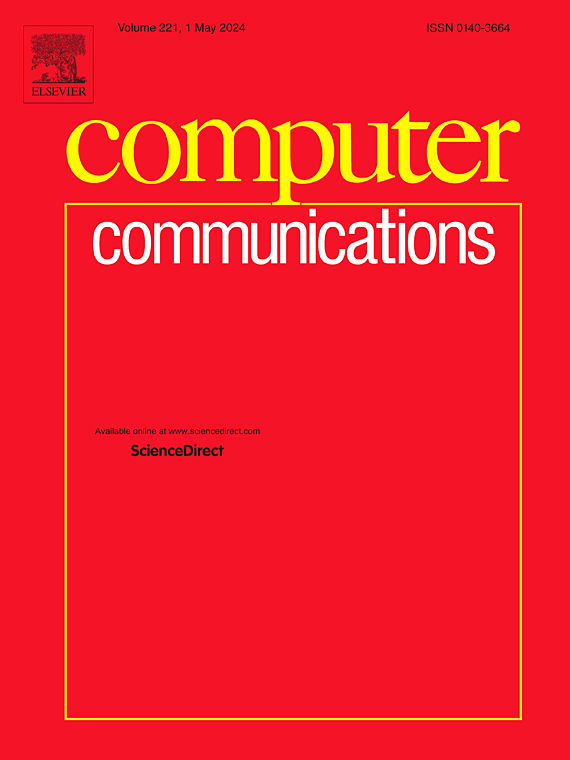无人机辅助异构蜂窝网络中基于高效用户关联和资源分配的多智能体近端策略优化
IF 4.5
3区 计算机科学
Q1 COMPUTER SCIENCE, INFORMATION SYSTEMS
引用次数: 0
摘要
无线通信需求的快速增长给现代网络带来了前所未有的压力,尤其是在提高容量和扩大覆盖范围方面。异构蜂窝网络(HCN)以其灵活的多层架构,为应对这些挑战提供了一个前景广阔的解决方案。然而,这些网络面临着相当大的复杂性和资源限制。因此,开发高效的用户关联和资源分配(UARA)方案对于建立可持续的高性能无线通信系统至关重要。在这项工作中,我们建立了一个具有多个用户设备(UE)的无人机(UAV)辅助 HCN 范例。我们提出了无人飞行器部署和 UARA 策略的优化方案,以最大限度地提高系统的长期效用,同时确保 UE 的服务质量。具体来说,我们采用了一种高效的贪婪部署算法来动态更新无人机位置并最大化覆盖效用。在 UARA 决策方面,我们引入了一个动态非凸混合整数非线性编程问题,并将其建模为一个部分可观测的马尔可夫决策过程。随后,我们提出了一种基于独立奖励的混合行动空间多代理近端策略优化算法(IRH-MAPPO)。此外,我们还采用了集中式训练和分布式执行框架,并结合了值归一化和动作掩码来提高算法的效率。实验结果表明,我们的算法在系统效用方面明显优于基线算法,尤其是在频谱效率(SE)和能效(EE)方面,这证明了它的有效性、优越性和可扩展性。本文章由计算机程序翻译,如有差异,请以英文原文为准。
Multi-Agent Proximal Policy Optimization based efficient user association and resource allocation in UAV-assisted Heterogeneous Cellular Networks
The rapid growth in wireless communication demands has placed unprecedented pressure on modern networks, particularly concerning capacity enhancement and coverage expansion. Heterogeneous Cellular Networks (HCNs), with their flexible multi-layered architecture, present a promising solution to these challenges. However, these networks face considerable complexity and resource constraints. Consequently, developing efficient User Association and Resource Allocation (UARA) schemes is essential for establishing sustainable, high-performance wireless communication systems. In this work, we establish a paradigm for an Unmanned Aerial Vehicle (UAV)-assisted HCN with multiple User Equipment (UEs). An optimization scheme for UAV deployment and UARA policy is proposed to maximize the long-term system utility while ensuring quality of service for UEs. Specifically, we employ an efficient greedy deployment algorithm to dynamically update UAV locations and maximize the coverage utility. For UARA decision-making, we introduce a dynamic non-convex mixed-integer nonlinear programming problem and model it as a partially observable Markov decision process. Subsequently, an Independent Reward-based Hybrid action space Multi-Agent Proximal Policy Optimization algorithm (IRH-MAPPO) is proposed. Additionally, we utilize a centralized training and distributed execution framework and incorporate value normalization and action masking to improve its efficiency. Experimental results demonstrate that our algorithm significantly outperforms the baselines in terms of system utility, particularly in Spectral Efficiency (SE) and Energy Efficiency (EE), which confirms its effectiveness, superiority, and scalability.
求助全文
通过发布文献求助,成功后即可免费获取论文全文。
去求助
来源期刊

Computer Communications
工程技术-电信学
CiteScore
14.10
自引率
5.00%
发文量
397
审稿时长
66 days
期刊介绍:
Computer and Communications networks are key infrastructures of the information society with high socio-economic value as they contribute to the correct operations of many critical services (from healthcare to finance and transportation). Internet is the core of today''s computer-communication infrastructures. This has transformed the Internet, from a robust network for data transfer between computers, to a global, content-rich, communication and information system where contents are increasingly generated by the users, and distributed according to human social relations. Next-generation network technologies, architectures and protocols are therefore required to overcome the limitations of the legacy Internet and add new capabilities and services. The future Internet should be ubiquitous, secure, resilient, and closer to human communication paradigms.
Computer Communications is a peer-reviewed international journal that publishes high-quality scientific articles (both theory and practice) and survey papers covering all aspects of future computer communication networks (on all layers, except the physical layer), with a special attention to the evolution of the Internet architecture, protocols, services, and applications.
 求助内容:
求助内容: 应助结果提醒方式:
应助结果提醒方式:


